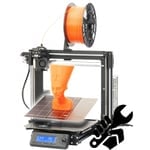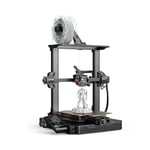Sovol has been experimenting with its printers since the beginning, and with each printer, they’ve gone in a different direction. From the standard Ender-style clone SV01, to the cube-like Cartesian-XY SV05, we finally arrive at the SV06, a direct-extruding all-metal hot end bed slinger.
The looks and frame style seem to be clearly inspired by the Original Prusa i3 MK3S+. Here’s the thing, though: At the time of writing, the SV06 costs just $259, while a Prusa MK3S+ will cost you a hefty $1099 assembled. The Sovol SV06 has dual Z-axis motors, automatic bed leveling, and a max temp of 300 °C. It also has the added bonus of a slightly larger build volume (220 x 220 x 250 mm) and an innovative planetary-geared direct extruder.
Overall, a compelling proposition. Prusa-looks and abilities at an Ender-like price? What’s not to like?
Verdict
Pros
- Excellent performance for the price
- Great removable PEI-coated print bed
- Useful smart features like sensorless homing and auto-bed leveling
Cons
- Flexible filaments tangle in the extruder gearing too easily
- No filament sensor
- Dated UI
The Sovol SV06 has all the makings of a great option for those starting out with 3D printing or those who want a cheap reliable performer for rigid filaments. The cost is low, it has plenty of build volume, the build quality feels good, and there are many quality-of-life features, including automatic calibration routines, quiet operation, and consistent extrusion using a planetary-geared direct extruder.
We tested the SV06 using default settings and profiles, and after a relatively small amount of tinkering (because there’s always some tinkering), we got it to produce some quality results. That’s not to say it’s perfect: We ran into issues printing flexibles, which consistently got tangled up in the fancy planetary gearing.

The Tech
Like most machines of this price bracket, the Sovol SV06 arrives flat-packed in hard-to-recycle black foam which keeps it safe from impacts during transit. Inside the box, there’s plenty of (2D) printed documentation written in good-enough English to get your first print going quickly. It also comes with a set of Allen keys, snips, a MicroSD card, a USB SD card adaptor, and a coil of cheap-and-nasty PLA to use for your first print before you trade it for better-quality material. Like most FDM 3D printers now, the Sovol SV06 accepts 1.75 mm filament only, which is fine because it’s the most common format and you’ll be spoiled for choice.

Some minor assembly is required before you can start printing. Thankfully, the complex mechanical bits are pre-assembled for you. The assembly you’re responsible for is simple: Just bolt the frame to the pre-assembled base, then fit the screen, power supply, spool holder, and mainboard. All the hardware is in separate bags and clearly labeled, and all the tools you need for assembly and maintenance are included.
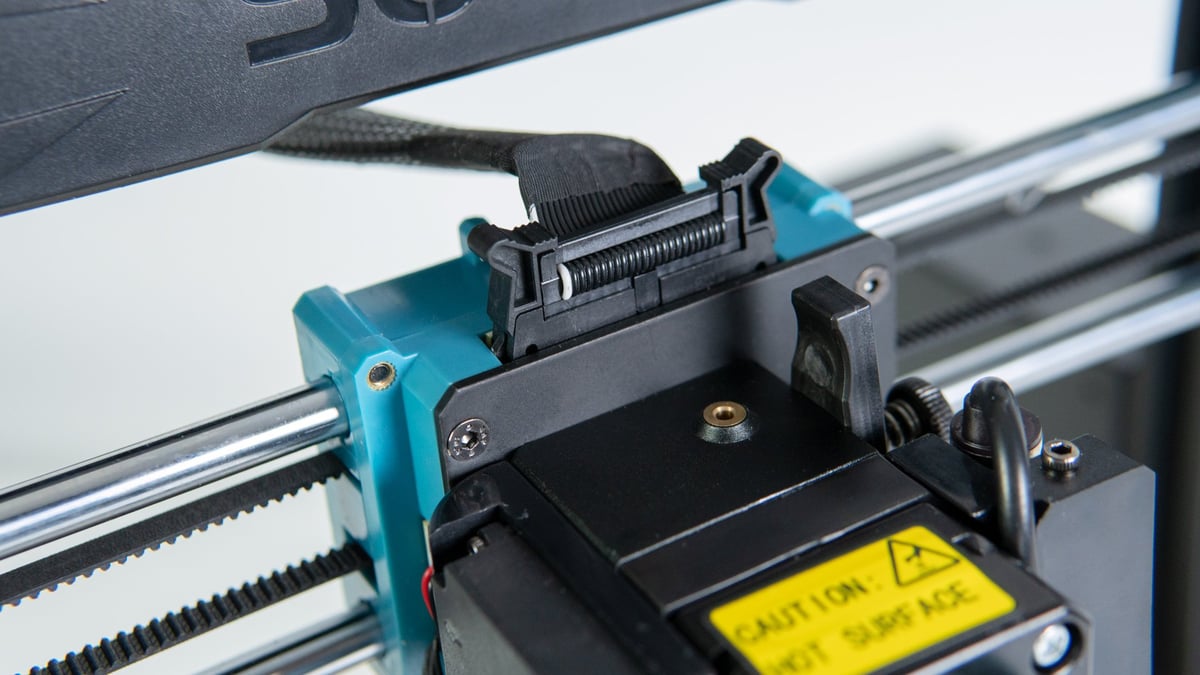
The mainboard ships in a hard plastic enclosure that attaches to the frame, so you won’t accidentally destroy it with static electricity. Similarly, the power supply is insulated in its own enclosure so there’s little chance you’ll zap yourself. Wired connections are pre-terminated and clearly marked, leaving you only to connect each cable to its corresponding connector.
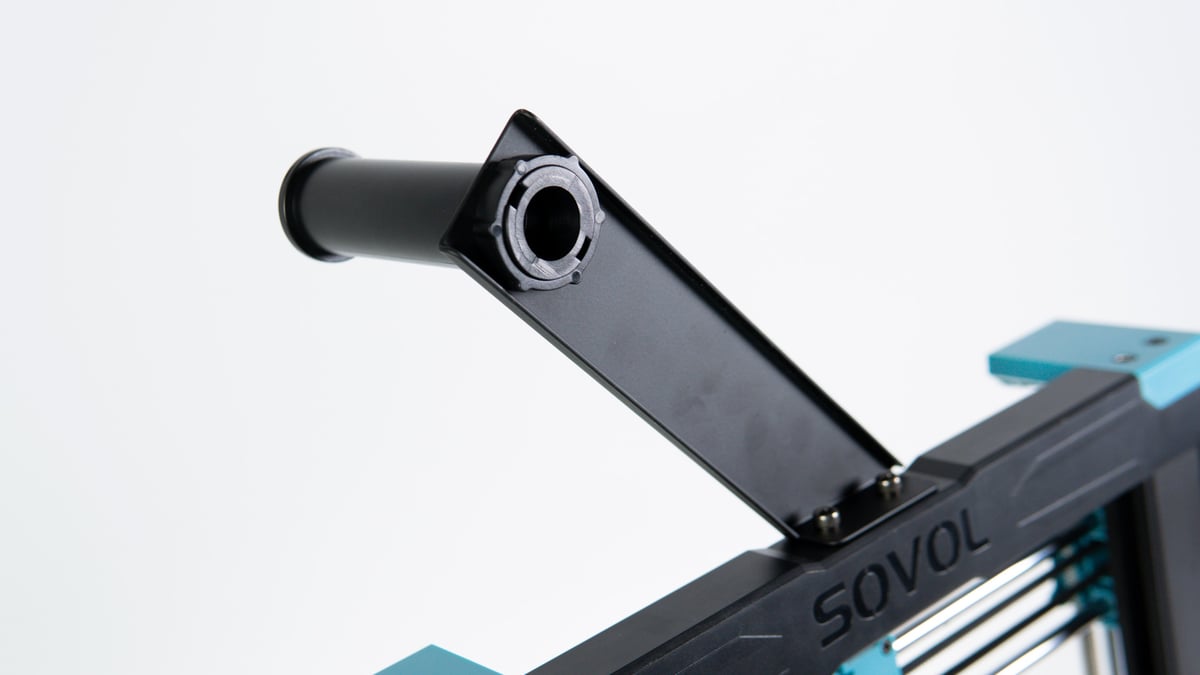
The instructions in the box are clear and walk you through the process. Digital versions can also be found on the included MicroSD card. This card also contains test models and Sovol’s white-labeled version of Cura with a pre-configured machine profile to use. We had our Sovol SV06 ready to go inside an hour without issue.
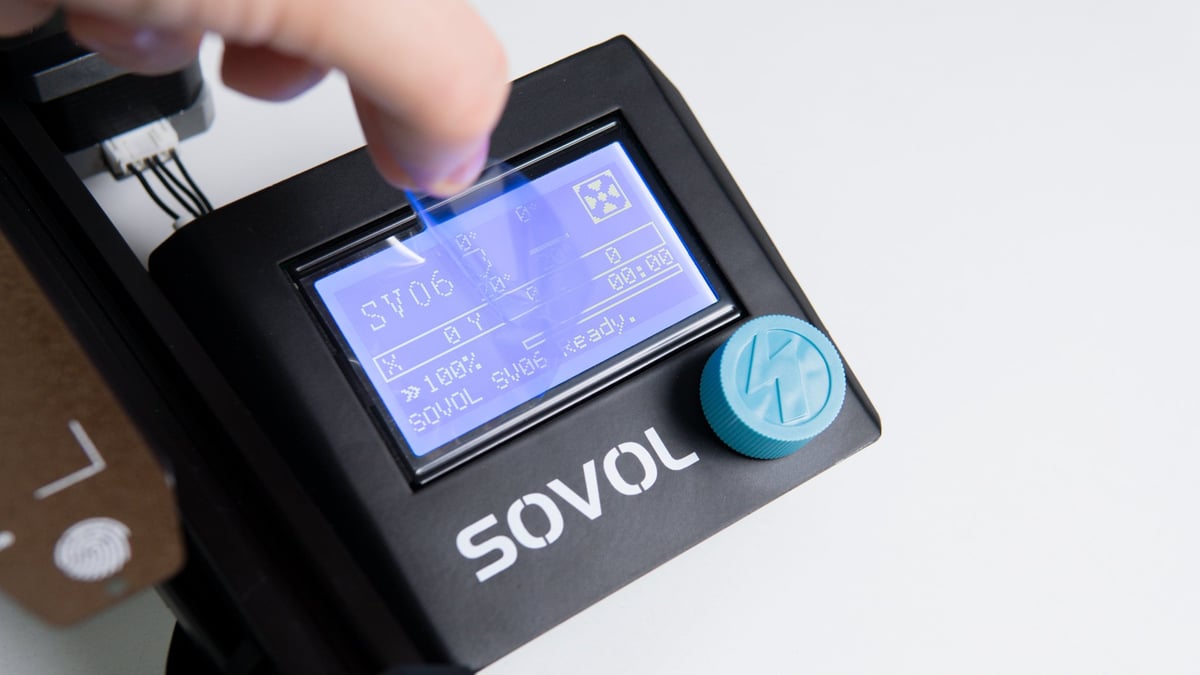
Basic Calibration
The Sovol SV06 runs on Marlin-based firmware. You can already find the source code on GitHub. The machine is controlled using a monochrome LCD screen and a clicky rotary encoder to navigate menus and sub-menus. The UI is basic by today’s standards, but will be familiar to those who have printed with budget machines anytime in the last half-dozen years.
Sovol recommends calibrating the machine before your first print, and a loose instruction sheet in the box walks you through the process in detail. First-time calibration involves leveling the X-axis gantry, setting the Z-offset, and leveling the bed using the SV06’s auto-leveling system. These are pre-configured routines in the machine’s firmware, so everything is nice and automated. If you’re completely new to these long-standing 3D printer rituals, believe us when we say these automated routines save a ton of hassle.
Motor noise is a common annoyance with some 3D printers, but not with the SV06: The 32-bit mainboard and TMC2209 stepper drivers make operation whisper-quiet, and rubberized feet at the base dampen any noise further. The noise you will encounter is the machine calibrating its software-based endstops. It does this by finding the end of travel of each axis, and when this happens, the motors stall noisily for a second or two. You’d be forgiven for thinking something’s wrong at this point – we certainly did – but trust the process: The result will be a nicely leveled X-axis. The machine’s dual Z-axis motors will keep that level during normal operation, and you’ll only need to repeat this routine every once in a while.
There’s a distinct “scratchiness” to the sound of our machine going about its business – seemingly from the bearings. This could just be the machine running them in, though. It doesn’t sound great but has no apparent impact on the machine.

Printing & Usability
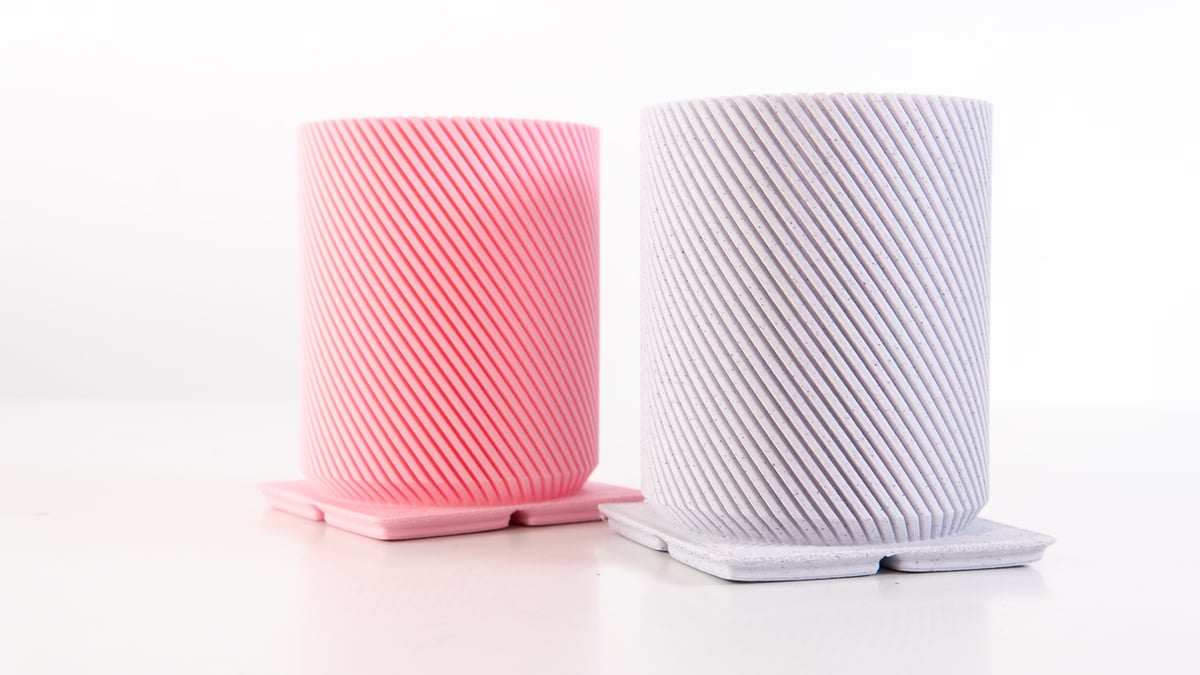
In operation, the Sovol SV06 is equal parts familiar and convenient.
The bed leveling process uses an induction probe to determine the ideal distance from the build surface. All you need to do is set the Z offset by sliding a sheet of A4 paper between the nozzle and the bed until the nozzle starts to pinch it lightly – standard stuff.
Twenty-five points on the bed will be probed, and the machine will work out the ideal distance for a reliable first layer.
The build plate is a flexible steel magnetic powder-coated sheet, and the flex makes it easy to remove prints. The coating also gives a good adhesion surface. So far, we haven’t needed to add any glue or similar adhesion helpers. The build volume marginally beats the MK3S+ on the spec sheet – we expect this is done on purpose. An extra few mm doesn’t make a huge difference, but it’s always nice to have a bit more space.
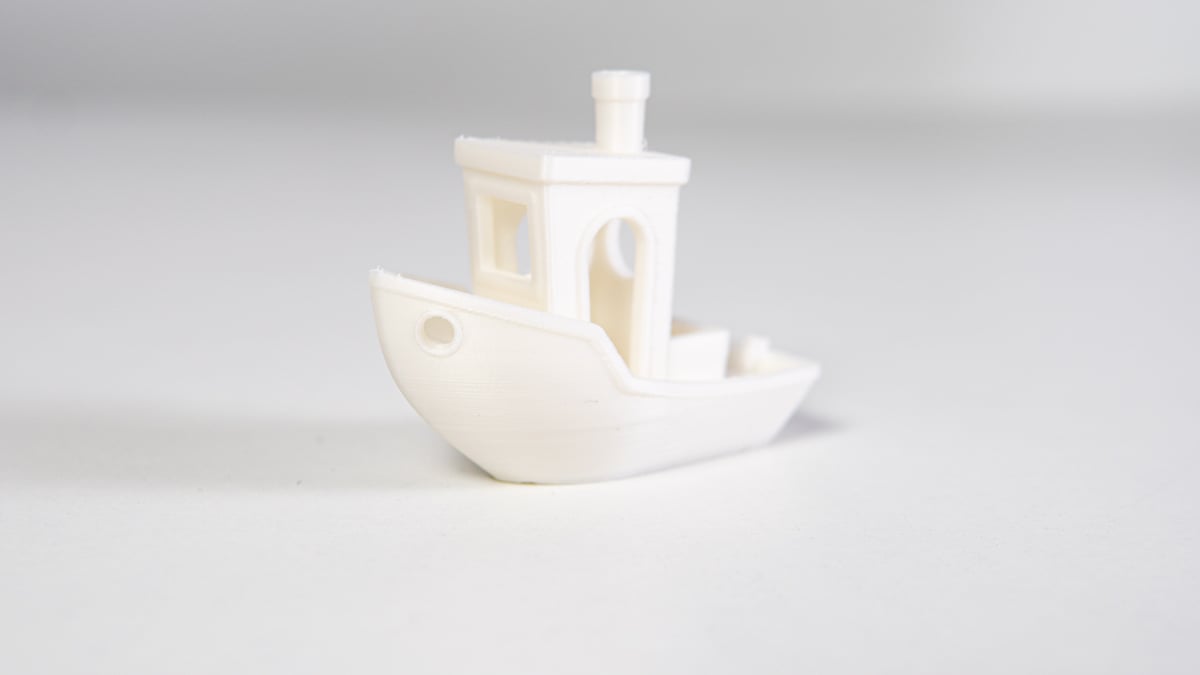
We printed a Benchy with the PLA that came in the box, because of course we did. The print took an hour and a half with pleasing results. Even the bow section – the bit that usually falters under poor cooling – looks tidy. It’s not particularly fast, but speed isn’t everything.
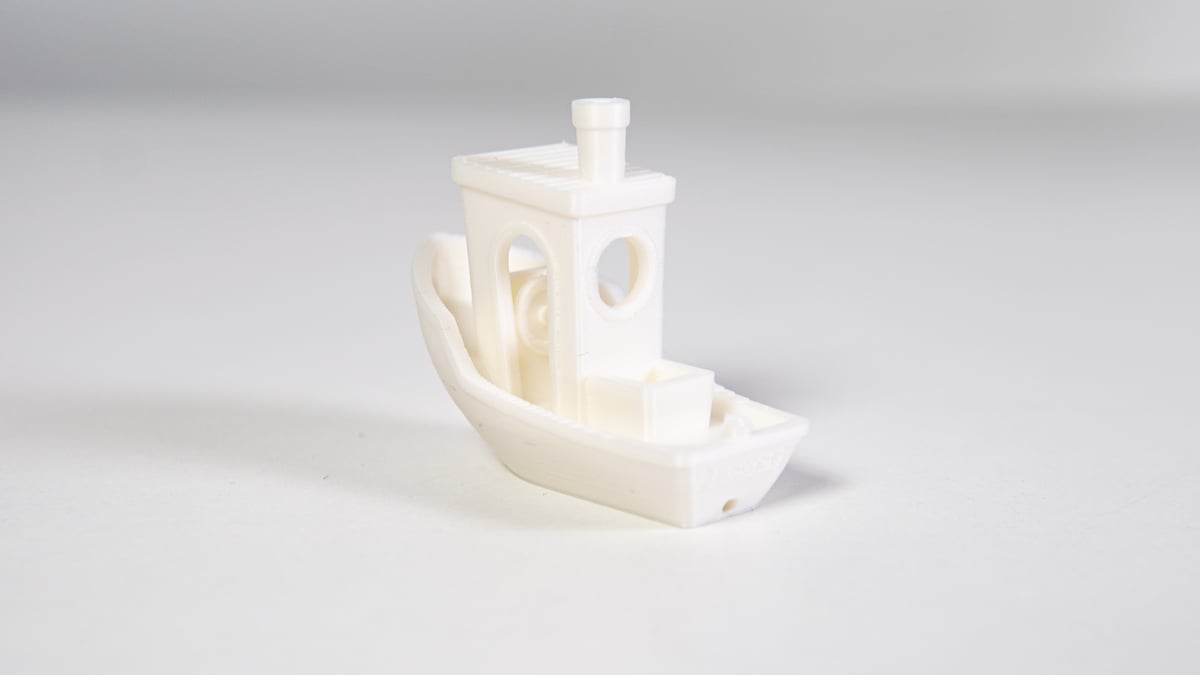
Perhaps we got too confident after this because the next test involved printing TPU 95A – a material that Sovol claims this machine can handle. We didn’t have much luck with it – our tests consistently failed. The filament would divert from the filament path and jam up in the planetary gearing, completely disabling it. Some community reviews on Reddit have pointed to similar issues. We accept the possibility of user error, but we did try a number of times and got the same results. This was a pain because every time it happened, we had to perform a tedious process of disassembling the print head and removing jammed material by hand.
On the bright side, it gave us the opportunity to have a good look at the planetary gearing setup (although after doing this two times it got boring and we switched back to PLA).
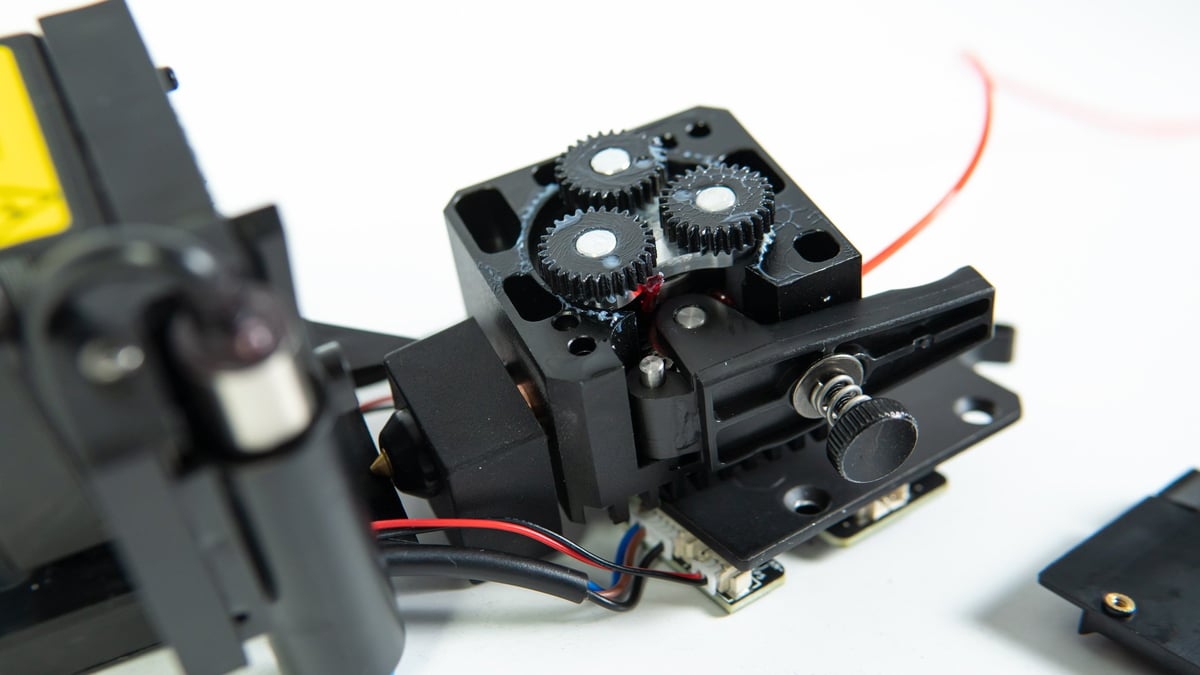
Incidentally, all the tools you need to do this kind of maintenance are included in the box. Does this mean Sovol anticipates this kind of issue? We don’t think a beginner will be comfortable doing this kind of maintenance. Then again, if you’re a beginner, you probably only want to use PLA or other rigid materials – which we’ve had no issues with so far.
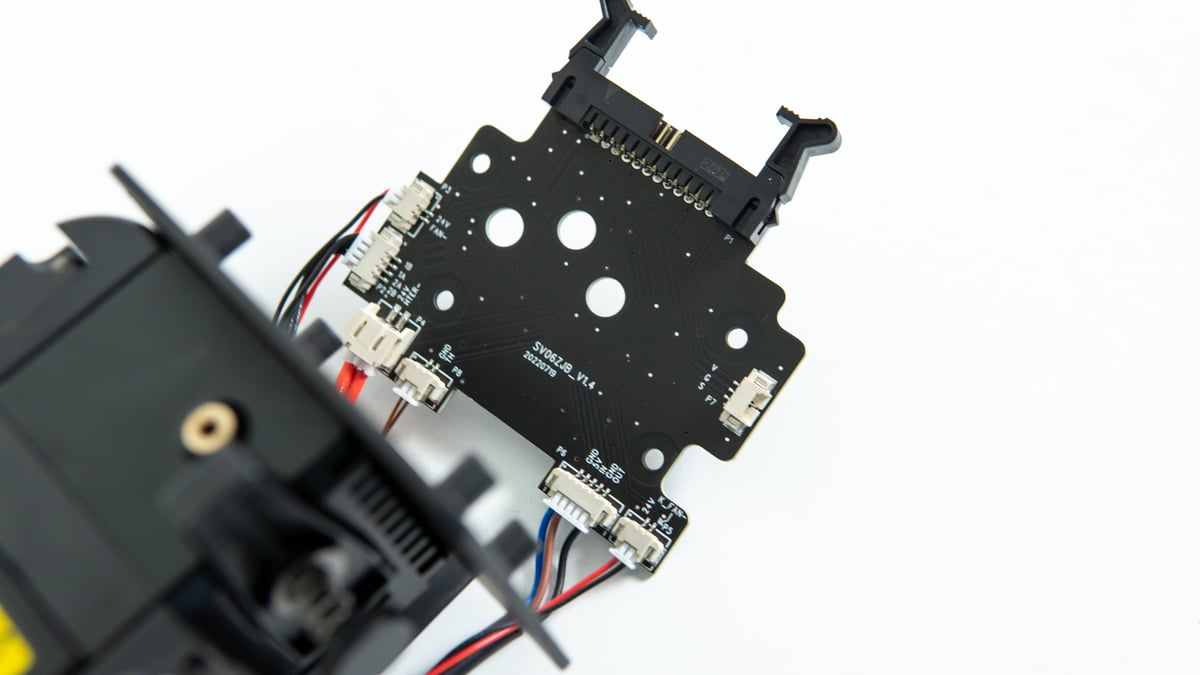
When everything was reassembled, we torture-tested it with a long, complex printed bust of Walter White from Breaking Bad. This was modeled by Sid Naique, who kindly gave us permission to use it here.
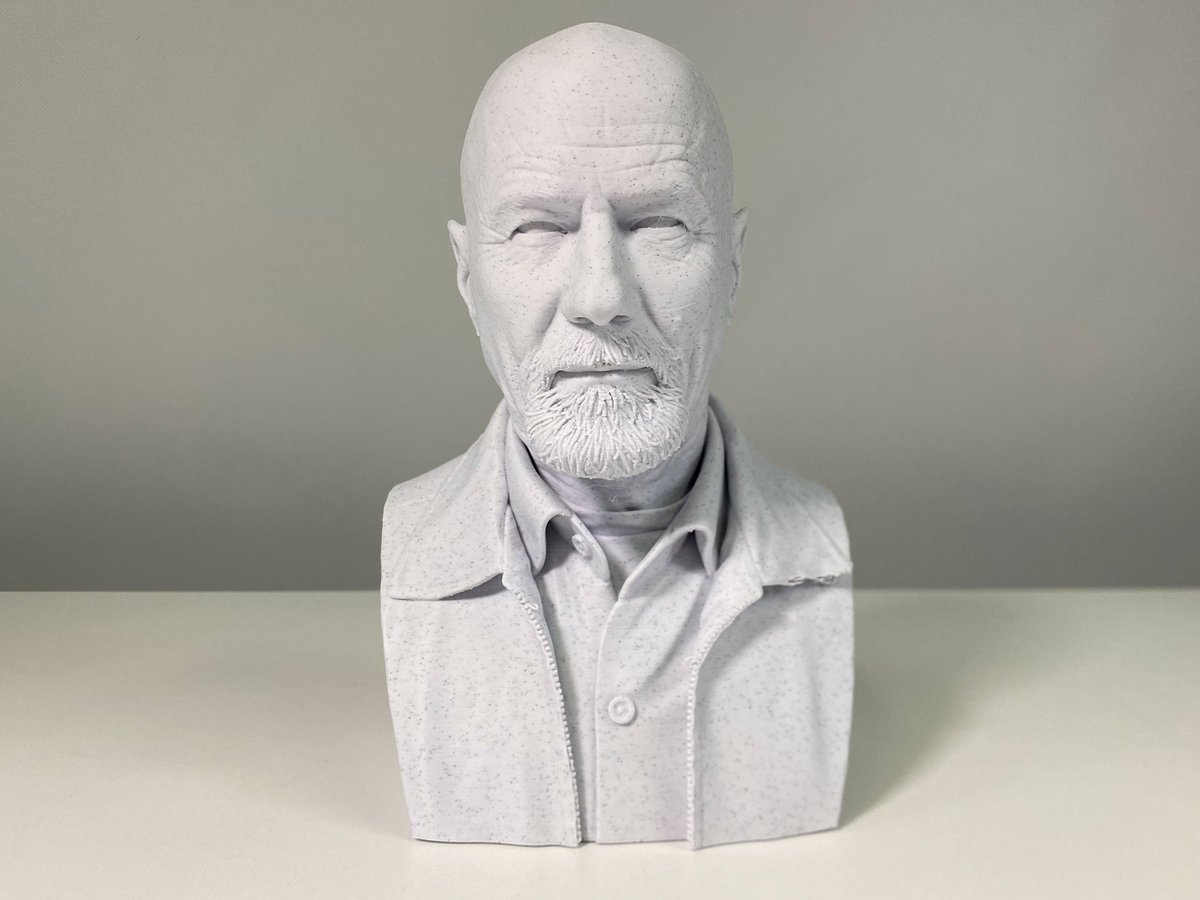
This is a great test model because the life-like detail shows what the printer is capable of. The model was scaled to fit both the head and torso sections on the bed, and it stands about 180 mm tall when assembled. The print took around two days to finish.
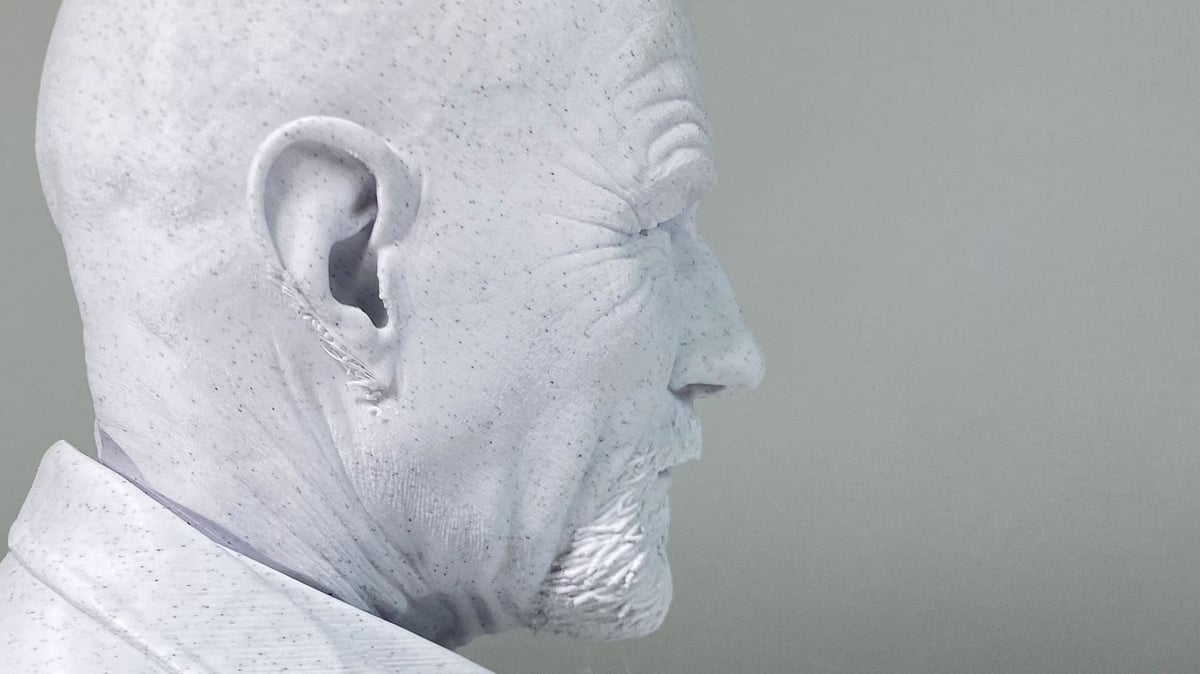
This bust was actually attempt number two. The first one failed due to filament runout. Sadly, a filament runout sensor is a feature notably absent from the SV06.
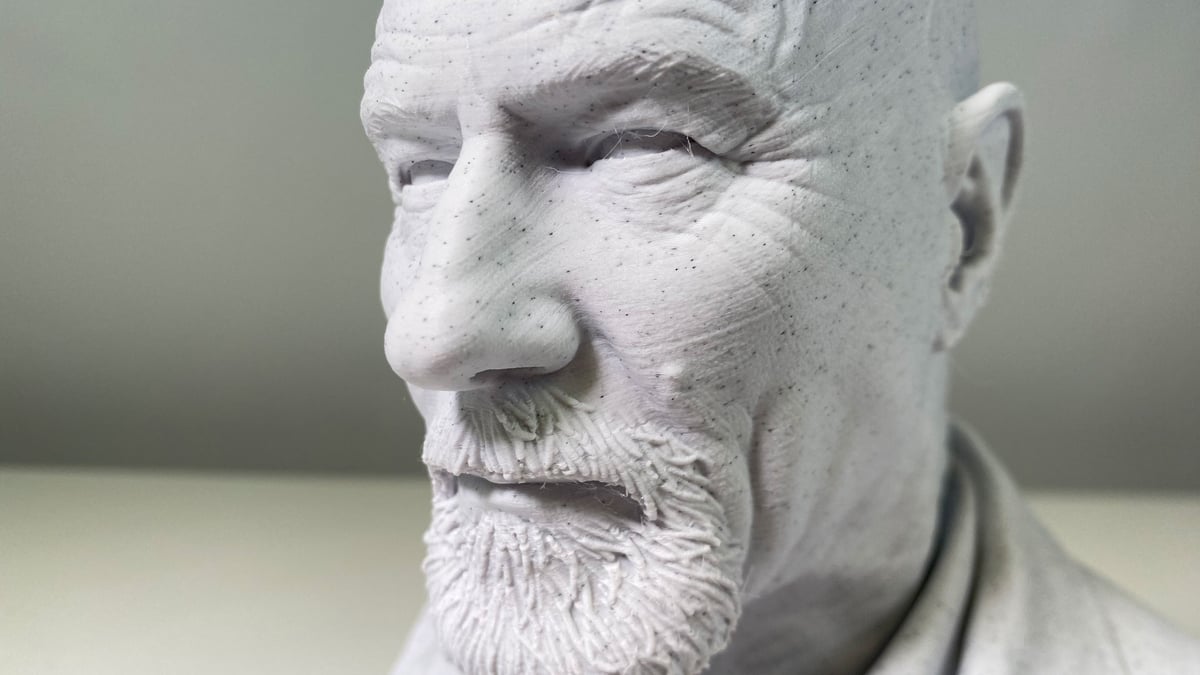
We already mentioned there’s no filament runout detection on the Sovol SV06. Other entry level machines tend to have this feature, so we question why Sovol chose not to include it. It’s possible to add one manually, but you have to know a few things about compiling firmware to do that. We did notice a spare port on the extruder PCB, so perhaps it could be used for this?
The MicroSD card slot is tucked away at the back of the machine where the mainboard is mounted. This is kind of inconvenient if you’re in a tight space, as you need to reach around the gantry to get to it. The slot is also unlabeled, so it can be a finickity process to get the card in the right way.
It would’ve been an encouraging, community-centric touch for Sovol to make the CAD data of the injection molded parts (of which there are many on the SV06) available as a jumping-off point for modifications. They haven’t, but it would be nice.

Is It Worth It?
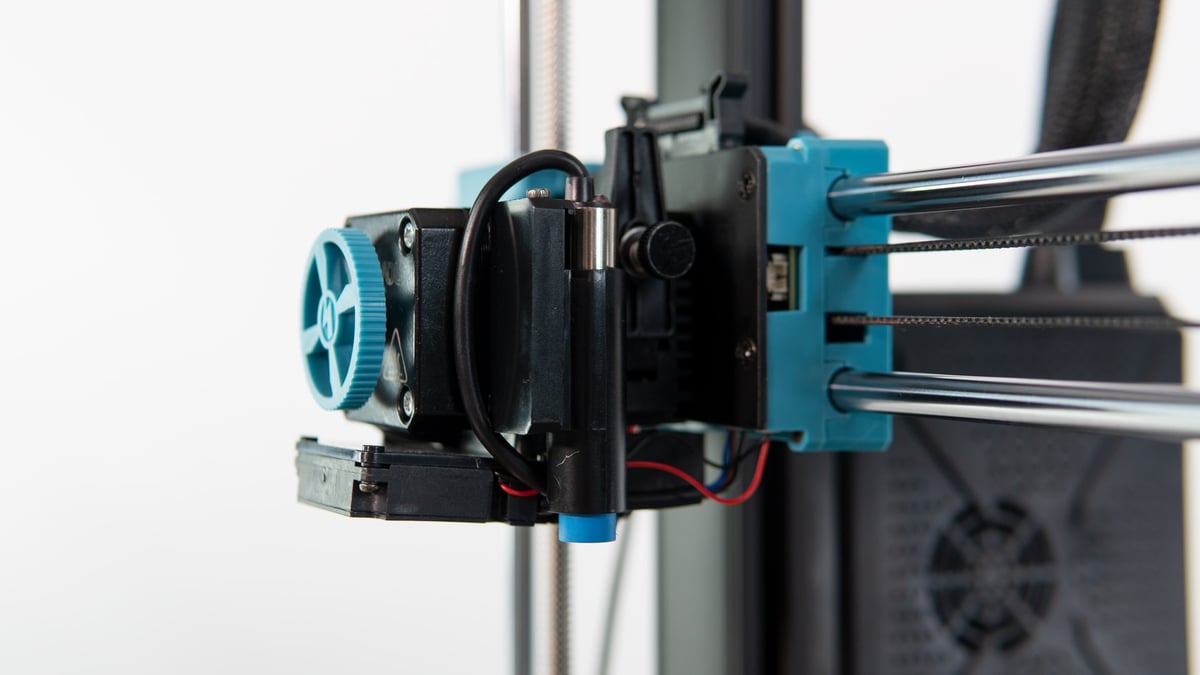
When all’s said and done, we feel the Sovol SV06 is a significant step forward for affordable, reliable 3D printing. The price-to-feature ratio is insanely good, and although this machine isn’t perfect, it’s a big step in the right direction.
Where it falls down is in printing flexibles. Our initial testing of TPU with the SV06 always ended in a tangle of filament caught up around the trio of gearing within the printer’s fancy gearbox. It’s possible this is our error, although we did follow the guidance included in the box.
This doesn’t make the SV06 a bad printer – if you stick to rigid filaments like PLA, you’ll be alright. The balance of price, functionality, and features is still a great onboarding experience for newcomers to 3D printing, though the possibility of having to crack the print head open when dealing with fussy flexibles may be too much for some.
If you’re into tuning and upgrading your 3D printer, it’s also worth noting the Sovol SV06 has all the same upgrade potential as a Prusa MK3S+ does, but for a fraction of the investment. From all we’ve seen, it is a hell of a starting point.

Features
Build Volume, Temperatures & Speed
Sovol has kept the build volume for the SV06 fairly standard at 220 x 220 x 250 mm. The all-metal hot end enables high temperatures of up to 300 °C, allowing for some non-standard filaments like nylon and polycarbonate.
The print bed can reach 100 °C, slightly lower than most competitors offering a high-temperature nozzle.
The recommended maximum printing speed is 80 mm/s, which is average compared to other machines on the market. You can tweak the firmware as you wish, as it’s available on GitHub.
All-Metal Hot End
The SV06 has an all-metal hot end and no PTFE tube. This allows it to reach temperatures of up to 300 °C, so you don’t need to change spent PTFE tubes all the time.
While it does support high temperatures, Sovol recommends only experts use this option, which makes sense as these kinds of material are often challenging to print.
The fitted nozzle is a MK8 type made of brass, which means abrasive filaments such as carbon fiber will wear it away. If you want want to use these kinds of materials, you’ll need to change the nozzle to something like hardened steel. You do get a spare brass nozzle in the box if you’d prefer to burn through them.
Planetary Direct Extruder
Sovol has designed the direct extruder exclusively for the SV06, and it uses planetary gears to push the filament through to the hot end.
Planetary gears, by design, derive higher torque from a relatively small motor. Planetary gears are also very accurate and durable – qualities you look for in a good extruder.
Automatic Bed Leveling
Automatic bed leveling is almost guaranteed at this price range, and the Sovol SV06 has one. It uses an induction sensor that uses its metal print bed to measure and compensate for any unevenness on the bed.
It does this by forming a grid of 25 points where it measures the distances of the probe from the bed. These calculations form an imperfections mesh that the printer compensates for to get an accurate print every time.
The ABL is also crucial for the G34 Z auto-align feature present in the SV06.
Dual Z-axis & Auto Z Align
One of the most desired upgrades for low-cost FDM printers is usually dual Z-axis lead screws. It provides stability and removes some of the sag experienced while printing with a single Z-axis lead screw. You’ll be glad to know the SV06 comes with dual Z-axis out of the box.
Additionally, it can use the G34 command to auto-level the Z-axis without additional modification. G34 uses the independent stepper drivers and motors and automatic bed leveling to remove any discrepancies on either side of the Z-axis, keeping the X-axis parallel to the bed.
32-bit Sovol Mainboard
As already mentioned, Sovol is moving away from Creality – at least for the SV06. One of the components that they have again customized is the 32-it mainboard that drives the entire printer. This custom board runs Marlin and should have at least five stepper motor drivers if G34 is to work. We also know from its documentation that it’s using TMC2209 drivers – the silent kind!
Further Features
Additional features include:
- Filament sensor: PEI-coated spring steel sheet magnetic build plates are standard these days; they offer excellent performance with most materials and make it easy to twist off prints. Glad to see one here.
- Belt tensioners: Belt tensioners are another feature that, while common, is great to have. We can’t imagine tightening the belts quickly any other way.
- Partially assembled: The SV06 comes partially assembled, which means you can be up and running in minutes rather than hours — a great feature for anyone new to the hobby.
- Rotary Encoder-controlled screen: Sovol has cheaped out in a couple of places, including the screen. The interface runs off a monochrome screen with no touch or fancy icons.

Tech Specs
General Specifications
- Technology: Fused deposition modeling (FDM)
- Year: 2022
- Assembly: Partially assembled
- Mechanical arrangement: Cartesian-XZ-head
- Manufacturer: Sovol
3D Printer Properties
- Build volume: 220 x 220 x 250 mm
- Feeder system: Direct
- Print head: Single nozzle
- Nozzle size: 0.4 mm
- Max. hot end temperature: 300 °C
- Max. heated bed temperature: 100 °C
- Print bed material: PEI-coated spring steel sheet
- Frame: Aluminum
- Bed leveling: Automatic
- Display: Knob-controlled monochrome display
- Connectivity: USB, MicroSD
- Print recovery: Yes
- Filament sensor: No
- Camera: No
Materials
- Filament diameter: 1.75 mm
- Third-party filament: Yes
- Filament materials: PLA, ABS, PETG, Flexibles, Carbon Fiber, Nylon, ASA, PC
Software
- Recommended slicer: Sovol3D Cura 1.5.3
- Operating system: Windows, macOS, Linux
- File types: STL, OBJ, AMF
Dimensions & Weight
- Frame dimensions: 497 x 388 x 611 mm
- Weight: 9 kg

Featured Prints
A shout out to the talented artists that made the models we’ve printed throughout this review.
- 3DBenchy by CreativeTools, via Thingiverse
- Walter White bust by Sid Naique, via Patreon
- Gridfinity 2×2 Tactile Spiral Vase Pen Cup by cb88, via Printables
Similar Printers
For further information, feel free to check out our Best Budget Printers Guide. You may also be interested in the following printers:
Original Prusa i3 MK3S+
Everyone seems to love the Prusa i3 MK3S+, and it seems like the Sovol is in love with it too. Many of the specs and features on the SV06 emulate the MK3S+ but at a much lower cost. Almost four times cheaper, as it turns out. For reference, an MK3S+ will cost you ~$970 if you go with the kit and $1330 if you get the assembled version.
The Prusa has a similar print bed size, an induction sensor, a full-metal hot end, dual Z-axis lead screws, a knob-controlled monochrome screen, and a print resume function. The only thing missing on the SV06 is a filament sensor. It would be interesting to see which one is the better printer amongst the two or if the Sovol can even replicate the quality of the prints from the Prusa i3 MK3S+.
Creality Ender-3 S1 Pro
Creality’s Ender-3 S1 Pro is also a fair competition to the Sovol SV06 in terms of similarity. The S1 Pro is, of course, the loaded Creality machine, which at $423, costs much more than the Sovol. For that price, we get an all-metal sprite extruder, 220 x 220 x 270 mm build volume, PEI-coated spring steel sheet, a color touchscreen, built-in lights, and dual Z-axis lead screws as well.
Sovol is the underdog that will need to prove its performance against the Goliath that is Creality. If you are looking for a no-nonsense all-metal hot end machine, the Ender-3 S1 Pro is a pretty good bet.
Anycubic Kobra
Anycubic Kobra is an excellent printer with a direct extruder that has proven performance and costs less than the Sovol SV06 at $245.
We aren’t giving up on too many features over the SV06 with the Kobra. It has a high-quality color touchscreen, a similar build volume, a PEI build plate, induction auto bed leveling, and easy assembly. What’s missing are the dual Z-axis lead screws and the all-metal hot end. While dual Z-axis is great to have, the all-metal hot end is a bit of an overkill. Most users would never use those temperatures.
The Kobra is also a proven performer, which gives it an advantage against the promise of the Sovol SV06.
License: The text of "Sovol SV06 Review: Low Cost, High Potential" by All3DP is licensed under a Creative Commons Attribution 4.0 International License.
CERTAIN CONTENT THAT APPEARS ON THIS SITE COMES FROM AMAZON. THIS CONTENT IS PROVIDED ‘AS IS’ AND IS SUBJECT TO CHANGE OR REMOVAL AT ANY TIME.


